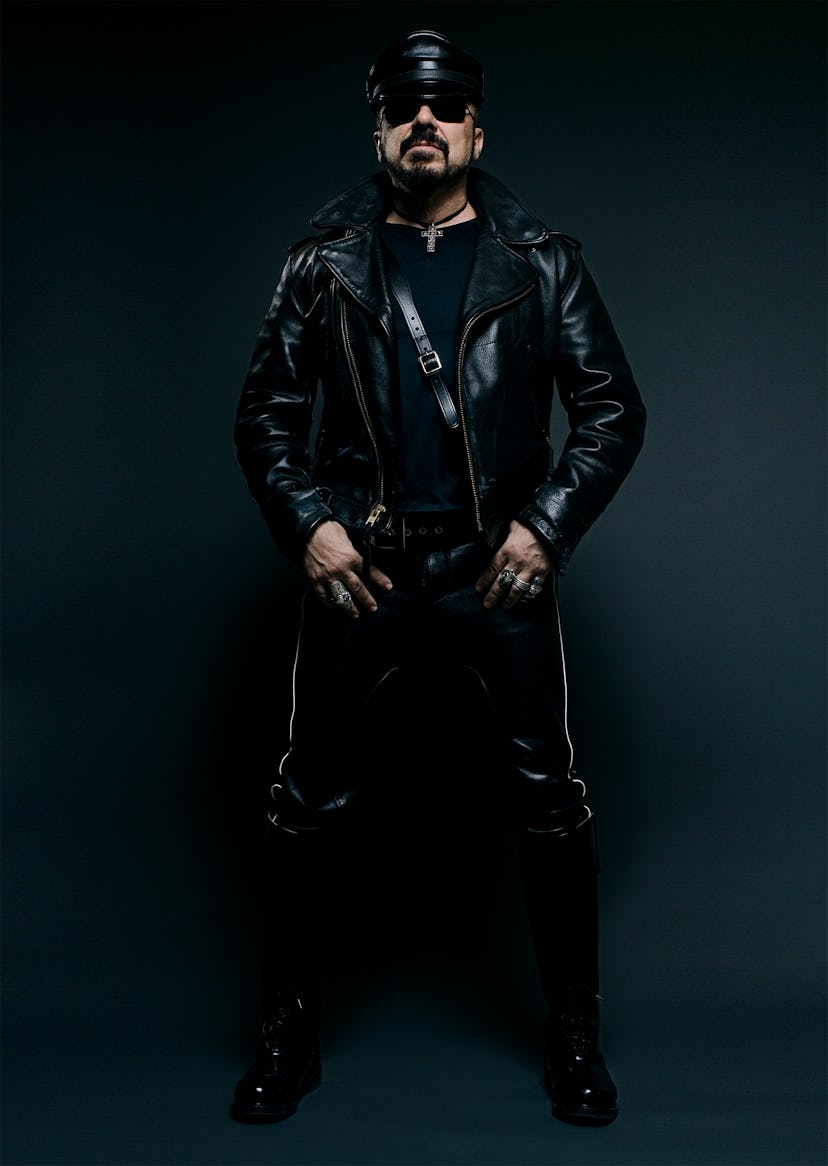Peter Marino: Dark Star

Peter Marino hates to repeat himself. The stores the architect has designed for his many luxury clients are distinguished by one-off commissions from artists and the absence of any dead ends that might force customers to retrace their steps. So it follows that the exhibition of Marino’s work and prolific art collection at the Bass Museum of Art in Miami (December 4 through March 29, 2015) should be called “One Way: Peter Marino.” Not to mention that with Marino, an autodidact who dresses as a leather-daddy biker, it’s often his way or the highway. “That interpretation doesn’t sound as kind,” he says. “But it’s totally true!”
Even the outside of the Bass Museum, it seems, came under his scrutiny. “I didn’t want some dumb banner,” he says. Instead, the artist Gregor Hildebrandt will wrap the facade with strips of videotape of Jean Cocteau’s 1950 film Orphée, a reimagining of the Greek myth of Orpheus—whose great downfall, of course, was looking backward. The black magnetic tape will cloak a portion of the museum’s stone walls in darkness. “You’ll know someone who wears black is coming to town,” Marino says with a booming laugh.
That installation is one of five commissioned by Marino for the show, which was curated by Jérôme Sans to resemble Marino’s New York office, where Andy Warhols and Damien Hirsts cohabit with blueprints and architectural models. When the Bass Museum’s executive director, Silvia Karman Cubiña, approached him about the exhibition, Marino’s first question was “How much will it cost me?” Nearly two years and a team of four dedicated architects later, his calculation is that, “in terms of blood and sweat, their estimate was way under.” (In fact, much of the show is underwritten by Marino clients: Chanel, Louis Vuitton, and Larry Gagosian are involved.)
The man-hours invested will likely be paid back with interest, though. The exhibition doubles as a peerless advertisement for the Peter Marino brand, which is inseparable from the man. There is a gallery of portraits of Marino by the likes of Francesco Clemente and Damien Hirst, who titled his newly commissioned painting The Dark Architect. There is an entire room dedicated to Marino’s architectural triumphs—“It should make the competition pee their pants,” he says gleefully. There is a filmed staging of Christoph Willibald Gluck’s opera Orfeo ed Euridice—a collaboration between Marino, Clemente, and Michael Rovner with costumes by Raf Simons—that further advances the myth of Marino as Orpheus, who was also known for his virtuosic talent and immodest tempting of fate. And there is a room, upholstered in his favored black leather, of Robert Mapplethorpe photographs, as well as the bronze boxes that are Marino’s output as an artist. “It’s leather, it’s bronze, it’s sex,” he says. “What can I say? It’s just me.”
Photos: Peter Marino: Dark Star
Portrait of Peter Marino by Manolo Yllera (2012). Courtesy of artist.
Portrait of Peter Marino by Steve Benisty (2011). Courtesy of artist.
Portrait of Peter Marino by Francesco Clemente (2012). Courtesy of Mary Boone Gallery, New York.